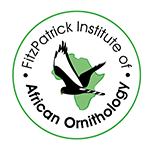CAR summary data
Habitat and noted behaviour
Sightings per Kilometre
Please note: The below charts indicate the sightings of individuals along routes where the species has occured, and NOT across all routes surveyed through the CAR project.
Global Status


IUCN Data (Global)
IUCN 2024. IUCN Red List of Threatened Species. Version 2024-1
(www)Assessment year: 2018
Assessment Citation
BirdLife International 2018. Pternistis afer. The IUCN Red List of Threatened Species 2018: e.T22678855A132050529. Accessed on 09 December 2025.
Taxonomic notes:
Pternistis afer (del Hoyo and Collar 2014) was previously placed in the genus
Francolinus.
Population:
The global population size has not been quantified, but the species is reported to be generally common to abundant (del Hoyo et al. 1994, Fuller et al. 2000).
Rationale:
This species has an extremely large range, and hence does not approach the thresholds for Vulnerable under the range size criterion (Extent of Occurrence <20,000 km2 combined with a declining or fluctuating range size, habitat extent/quality, or population size and a small number of locations or severe fragmentation). Despite the fact that the population trend appears to be decreasing, the decline is not believed to be sufficiently rapid to approach the thresholds for Vulnerable under the population trend criterion (>30% decline over ten years or three generations). The population size has not been quantified, but it is not believed to approach the thresholds for Vulnerable under the population size criterion (<10,000 mature individuals with a continuing decline estimated to be >10% in ten years or three generations, or with a specified population structure). For these reasons the species is evaluated as Least Concern.
Trend justification:
This species is very widespread and abundant, however populations have declined locally, especially in Zimbabwe, as a result of over-hunting (del Hoyo et al. 19940.


 Login
Login


